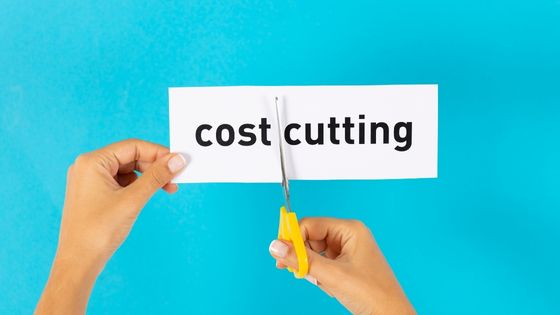The economic landscape in the UK has been volatile for some time and shows little sign of improvement even as a new year beckons. Inflation continues to be steeply high, alongside energy and fuel costs; consumer spending is set to sink, and a recession is all but guaranteed.


While recessions are not necessarily disaster scenarios, they are strong indicators that difficulty may follow, particularly for smaller or growing businesses. In order to remain profitable, or at least remain afloat for the duration of the economic downturn, cost-cutting measures may need to be employed. But how should you as a business leader approach such an endeavour?
Budgeting
Glib as this may sound, an essential part of regaining control over costs within your business is taking the reins through budgeting. In rapid-growth scenarios, and with initial booster funding from investors or other sources, it can be easy to rest on expenditure as the norm – but when it comes time to batten down the hatches, there is no budget rubric for you to follow.
Each department within your business should be delegated responsibility for their own budget, but you as a leader should retain executive control over how much each department receives and what they choose to spend it on. General overheads should be handled by you and by HR, with an overarching budget demonstrating the key operating costs you have against the profits you make. From here, difficult decisions can be made to ‘trim the fat’.
Reducing Outgoing Payments
Of course, the driving mechanism behind meaningful savings is the shaving down of outgoing costs. This is a multifarious endeavour in and of itself, with so many different avenues for potential savings. But a crucial example can be found in sourcing raw materials or equipment. As a contractor, you might buy timber and sheet wood on a per-project basis – when, in fact, buying plywood in bulk can reduce costs across projects and save money over time.
You might also find space for trimming the fat within the equipment and systems your teams use. Are there any software subscriptions that your team are simply not using? Is there equipment being serviced that doesn’t have much stature within the business’ working anymore? Cutting these can cut cost multiply.
Staffing
Hiring staff can be an incredibly expensive endeavour, and especially so if you find your staff turnover to be unusually high. By nailing down staff retention, you can have a surprisingly positive impact on your internal expenditure. While spending additional money on training for your staff may seem counterintuitive, upskilling your staff can improve workforce longevity and brace you for industry challenges without needing to expand your staff cohort.
Following on from this, if you have work that only needs doing sporadically, you might be better placed outsourcing said work to third parties. The cost of third-party services will be overall cheaper than the cost of new staff and will enable you to remain agile in your labour spending to boot.






















